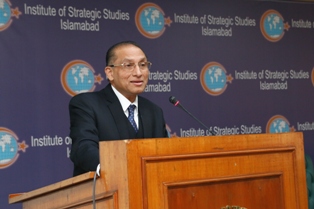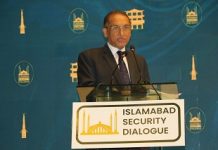Public Talk by Dr Samina Yasmin on
Understanding Extremist narratives and their impact on the society
18 February 2020
REMARKS BY DIRECTOR GENERAL
Welcome to Dr Samina Yasmeen. Rich experience in understanding issues of exclusion and inclusion in multicultural societies such as Australia. She has been associated with the world of think tanks as well. Australian strategic policy institute till 2016. And now Australian Institute for Int Affairs.
The subject that Dr Samina has chosen to talk about is complex, yet highly relevant to our world today. More than ever we need to understand the extremist narratives. More so in Pakistan, where we had the strongest exposure to extremist narratives, mostly religious extremism.
In fact, the entire South Asia can be a good case study for extremist narratives and their impact. For centuries, the Indian subcontinent was a relatively non-extremist society. Much more tolerant than say Europe or Middle East. Islam was spread here mostly by sufi saints, who were revered by Muslims, Hindus, and Sikhs alike. Ethnic differences mattered little. The twentieth century brought with it the seeds of extremism. Among Hindus, it was RSS and its exclusionary ideology encoded by the likes of Sarvarkar and Golwakar. Among Muslims, some took the Deobandi version to fundamentalist extremes.
Fast forward to the Afghan jihad of the Eighties, when madrassas cropped up all across Pakistan, many of them resorted to extremist narratives to inspire their recruits to fight jihad in Afghanistan. It took a heavy toll on Pakistani society for nearly four decades, until through a heroic effort called Zarbe Azb we succeeded in reversing the tide of extremism. There are still remnants, but overall the situation has improved. drove the extremists and terrorists away. Next door India has tried to remain secular, pluralistic until Modi showed up to create Hindu Rashtra. We can see how extremism is now taking roots in India. Exclusion, not inclusion, is the norm. Narrow nationalism is on the rise.
Other societies too have had their brush with extremism. Hitler’s Nazism, the holocaust, anti-semitism. Narrow nationalism is re surging in Europe. Closer home, Afghanistan, Iran, Saudi Arabia and many others have dealt with different shades of extremism.
How do you figure out what’s happening to our societies? Why extremist narratives become so popular so widely? How do you deal with them and minimize their negative impact in the society. Difficult questions. Perhaps difficult to answer. That’s what Dr Samina is here to talk about today.
Some basics are well understood. Extremists exploit the grievances of the people, real or imagined grievances. They craft compelling messages to identify with the victims. Then they use every available tool including internet and social media to influence their target audience. They use charismatic and articulate spokespersons to make fiery speeches that resonate well with the masses. They play on the themes of victimization, revenge, and reward, mostly religious reward. Above all, they blame problems on ‘others’. The ‘otherness’ about any community creates a sense of purpose in their ranks.
We also know that for counter narratives, the governments are struggling through public diplomacy, strategic communications, targeted campaigns, digital literacy, and forming counter narratives, the success of which I must say is limited. Will hear more about it from Dr Samina.
One reference that I do wish to drop in here. Francis Fukuyama’s latest book ‘Identity’ argues that nation, religion, sect, race, ethnicity, gender are the categories of identity that have overtaken broader more inclusive ideas of who we are. Walls are going up instead of bridges. Populist nationalists define their connection to the people in narrow identity terms and exclude large parts of population. The book is a warning that unless we forge a universal understanding of human dignity, we will doom ourselves to continual conflict. This environment of mutual suspicion is also giving rise to extremist behavior and conduct.
—————–












